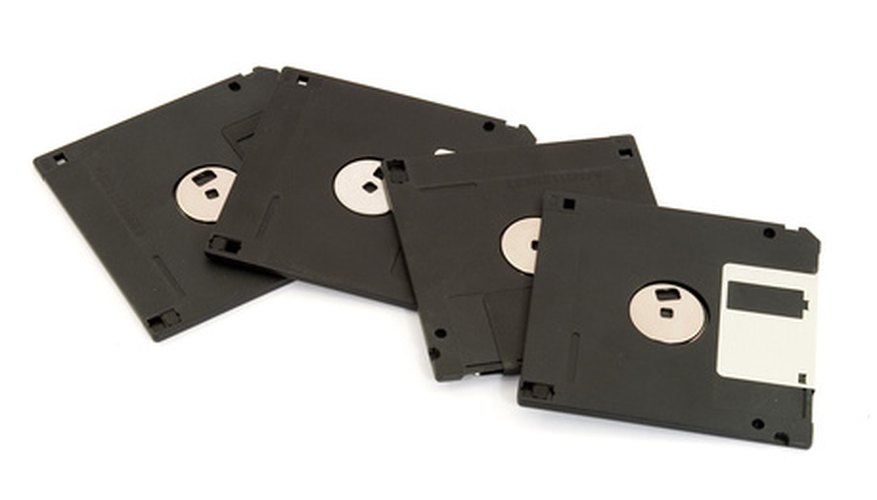Much of today’s virtual storage exists within the realms of magnetic storage. Dominating the latter half of the 20th Century, this type of storage first appeared in the 1950s. Magnetic storage depends upon electromagnetism. This technology has many advantages, as well as some disadvantages, which is why in 2010, many types of magnetic storage have given way to some newer and more improved technologies.
Floppy Disks
One of the most popular types of magnetic storage was floppy disks, which today have been rendered obsolete due to more advanced technologies. Floppy disks were advantageous at the time due to their low cost and ease to make. They recorded data using a magnetic head and rotating media. Their first appearance was in 1970, followed by modified versions, until the smaller, more easy to handle 3 1/2-inch version came out in 1980, according to Accurite Technologies, accurite.com.
Floppy disks had drawbacks such as a low storage capacity—which allowed only 1.44 megabytes of information to be stored—resulting in them quickly being rendered obsolete by CDs. They also had low data transfer rates, meaning that they took a long time to transfer data between sources.
- One of the most popular types of magnetic storage was floppy disks, which today have been rendered obsolete due to more advanced technologies.
- Floppy disks had drawbacks such as a low storage capacity—which allowed only 1.44 megabytes of information to be stored—resulting in them quickly being rendered obsolete by CDs.
Magnetic Tape
Another type of magnetic storage that has been rendered nearly obsolete is magnetic tape. Magnetic tapes were mostly used within movies and music tapes. This technology was especially popular during the 1980s and early 1990s. According to the British Broadcasting Association (BBC), the first videotape recorder was introduced in 1956, costing an estimated £65,000. The technology ultimately evolved into the VHS format in the 1980s, which became the standard format for video tapes.
Magnetic tape was advantageous when it was introduced because it was very small and thin. It could also be wound upon itself; therefore, it utilised a limited amount of space. Just like other magnetic tape technologies, it had several disadvantages as well. These include durability; if any area of the tape is damaged or broken, it can lead to the entire role being useless. There is also only a small amount of space to record data on magnetic tape.
- Another type of magnetic storage that has been rendered nearly obsolete is magnetic tape.
- Magnetic tape was advantageous when it was introduced because it was very small and thin.
Hard Disk Drives
Hard disk drives are commonly found within computers. They were first introduced in 1957, being extremely impractical and disadvantageous at the time because of their large 24-inch diameter. They originally could hold 5 MegaBytes of information.
- Hard disk drives are commonly found within computers.
- They were first introduced in 1957, being extremely impractical and disadvantageous at the time because of their large 24-inch diameter.
Hard drives have changed tremendously and have grown into a more than £19 billion dollar per year industry with the widespread use of computers across the globe, according to the University of Georgia website. They offer high-speed accessibility and are cheap to make. Occasionally hard disk drives are prone to error; however, advances in technology have made them more reliable.
